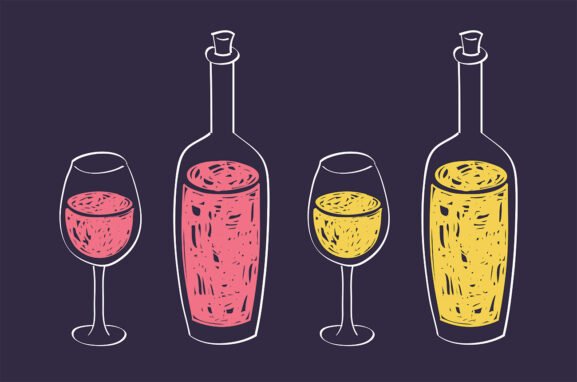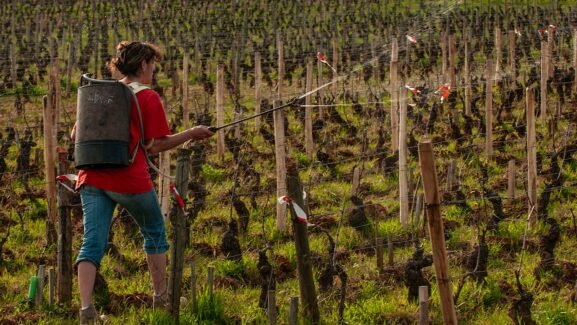The Willamette Valley’s Sparkling Wines Shine
Welcome to the Willamette Valley, where the quality of sparkling wine is high and aspirations are even higher. This renaissance, however, didn’t happen overnight.
The late Fred Arterberry, Jr. made the Willamette Valley’s first traditional method sparkling wine for his eponymous label in 1979. It was a whopping 70 cases of 100% Chardonnay that sold for $18 a bottle. Early on, only a handful of producers followed in Arterberry’s footsteps.
In 1987, Arterberry offered a possible explanation to a local reporter. “Making sparkling wine is a real pain. It’s a lot of work,” Artberry said. “It’s the hardest wine to make properly. You have to be a devotee or kind of a fanatic, I guess.”
Today, however, more people are making sparkling wine in the Willamette Valley than ever, undeterred by hard work and pain. These producers run the gamut from old hands like Argyle, Soter and ROCO, to young guns like Corollary, Arabilis and CHO.
A Hub for Production
Many of the Willamette Valley’s newest producers got by with a little help from a friend named Andrew.
Andrew Davis is the founder of Radiant Sparkling Company in McMinnville, Oregon’s first company dedicated to providing winemakers with the specialized equipment and services needed to make traditional method sparkling wine. Davis accelerated the Willamette Valley’s sparkling surge by giving many eager winemakers access to the expensive equipment they couldn’t afford.
When Davis left Argyle Winery to open Radiant in 2013, he estimated Oregon’s annual sparkling wine case production was approximately 31,000 cases, with Argyle responsible for almost all of that production. But there’s been an impressive swell of production in recent years. Data collected for the Oregon Wine Board by the University of Oregon’s Institute for Policy Research and Engagement reported that sparkling wine made up 3 to 5% of all case sales in 2022. That places Oregon sparkling wine sales between 171,000 and 285,000 cases that year, with the vast majority made in the Willamette Valley.
Those numbers, however, include bubble-filled wines made using various methods, from traditional to pétillant naturel.
To get a sense for the traditional method’s role in that growth, Davis says he had five clients when Radiant opened in 2013. Today, Radiant has 40 start-to-finish clients and produces approximately 45,000 cases annually. Argyle Winery in Dundee made 50,000 cases of traditional method wines in 2023, a hefty increase from 2013.
Prime Conditions
The key to the Willamette Valley’s sparkling success is growing high-quality grapes in the proper climate. As Kevin Johnson of Dion Vineyard puts it, “Where else in the world can you find so many world-class Pinot Noir and Chardonnay sites that are available to make sparkling? Most other wine regions are either too hot or too expensive—or both.”
It helps to have volcanic and marine sedimentary soils that Jeanne Feldkamp of Corollary Wines credits for producing a wide range of flavor profiles. “Our geography also provides stunning hillside sites with just the right balance of sun exposure and marine influence,” says Feldkamp. “And our cool nights help the fruit retain its zingy acidity without sacrificing ripeness.”
Lois and David Cho at CHO Wines are particularly excited about making sparkling wines with fruit grown at the tippy top of those hillsides. Lois Cho credits the vineyards, at 1,000 feet above sea level, with giving them slower ripening fruit and higher acidity.
But it’s more than just growing the right grapes in the right place, according to Davis—it’s also about intention. “Growers here understand delicacy and nuance, finesse and elegance because that’s what the Pinot Noirs and Chardonnays they make are like,” Davis says. “Those are also the main stylistic requirements for making high-quality sparkling wines.”
Sparklers for the Next Generation
The Willamette Valley’s take on sparkling wines appeals to a younger generation of wine drinkers.
Lois Cho reports that her tasting room guests tend to be millennials, and they are responding enthusiastically to sparkling wines, whites, rosés and even chillable reds. Noting that she and her husband have teamed up with Corollary and Arabilis Wines to make a traditional method sparkling wine currently in tirage, Cho says, “I think that signals a shift in what our generation wants to drink.”
There would be no repeat sales without quality wines. Otherwise, we wouldn’t have witnessed such a massive increase in case sales over the past decade. “The quality is there,” says Davis. “It’s very comparable to excellent grower Champagne and priced accordingly.”
“Priced accordingly” means top Willamette Valley producers can easily sell their traditional method sparkling wines for $75 and up, with several topping the $100 mark.
Davis also thinks the quality of traditional method wines in the Willamette Valley will improve as winemakers gain experience. He even suggested that one day, the Willamette Valley will be the analog to Champagne, as its Pinot Noir is to Burgundy and Napa Valley Cabernet Sauvignon is to Bordeaux.
It’s no wonder corks are popping around the Willamette Valley faster than popcorn in Iowa.
Domaine Serene 2015 Vintage Brut Sparkling (Dundee Hills)
After 80 months of tirage, this traditional method blend of 82% Chardonnay and 18% Pinot Noir is eager to please. The wine’s combination of Golden Delicious apple and browned butter aromas are almost butterscotch-like. Its creamy texture and elegant bubbles accompany flavors of lemon butter on brioche, saline and toasted filberts. Délicieuse! Editor’s Choice. 96 Points — M.A.
$110
Domaine Serene

Adelsheim 2017 Brut Rosé Sparkling (Chehalem Mountains)
A strawberry tart with a graham cracker crust gets the aroma party started, followed by a bit of lemon zest. The flavors are a touch tangier, with cranberries and rose hip tea holding court. Toast your happiest moments with this méthode traditionelle blend of 53% Pinot Noir and 47% Chardonnay. Disgorged on March 15, 2022. Editor’s Choice. 96 Points — M.A.
$75
Adelsheim

Lytle-Barnett 2017 Brut Sparkling (Eola-Amity Hills)
Peaches are joined by the aromas of white trillium flowers and apricot preserves spread across a warm buttermilk scone. A nice, frothy mousse and crisp acidity lift flavors of lemon, lime, salty Kalamata olives and fresh-grated ginger. Bottles of this 70-30 blend of Pinot Noir and Chardonnay are aged for a minimum of three years on their sides. Elegance personified. Editor’s Choice. 95 Points — M.A.
$75
Lytle-Barnett

Durant 2019 Brut Sparkling (Dundee Hills)
$60
Durant
More Willamette Valley Coverage

In the Shop
Find a Personalized Glass for Every Sparkling Moment
Published: August 9, 2024

